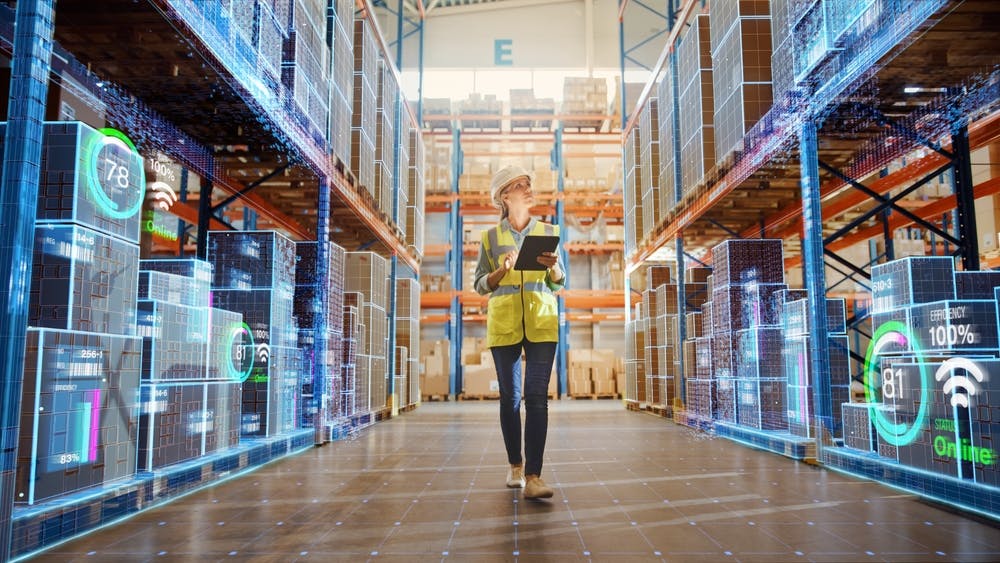How In-Store Analytics Fuel Sustainable Retail

According to Deloitte's 2023 CxO Sustainability Report, 73% of CxOs in the Consumer Industry have increased their investment in sustainability over the past year due to pressure from stakeholders such as customers, board members, and regulators. The report outlines the key changes companies have made to move the needle on sustainability:
59% use more sustainable materials (like recycled materials and lower-emitting products);
59% are increasing the efficiency of energy use (with energy efficiency in buildings, for example);
54% use energy-efficient or climate-friendly machinery, technologies, and equipment;
50% train employees on climate change actions and impacts.
While these numbers are heartening, it remains valuable to bear in mind that there’s still much to be done. In retail, there is a growing focus on a greener supply chain and increased circularity, but these meaty goals can only be achieved with the support of in-store analytics.
Sustainability has become more than just a buzzword; it's a crucial imperative driving business decisions. With consumers placing more emphasis on eco-friendly practices, retailers are searching for ways to reduce their environmental impact while still maintaining profitability. In this pursuit of sustainability, in-store analytics is proving to be an effective tool, providing valuable insights that enable retailers to make data-driven decisions towards a greener future.
READ MORE: Retail Impact: Europe’s Move Towards Sustainable Fashion
A Greener Supply Chain
Optimizing supply chains is one of the most impactful ways in-store analytics contribute to sustainability. By analyzing customer preferences and buying patterns, retailers can streamline inventory management, thereby reducing waste and overstocking. This not only minimizes the environmental impact associated with excess production and transportation but also improves operational efficiency.
Walmart leverages in-store analytics to enhance its supply chain sustainability. Using advanced data analytics, Walmart optimizes transportation routes, reducing fuel consumption and carbon emissions. Additionally, by closely monitoring inventory levels, the company minimizes food waste, contributing to its sustainability goals.
Given that most brands don’t own their own factories, to make real progress, companies have to take charge of their whole value chains, not just their own supply chains. Just take a look at these inspiring DTC brands, and RetailNext customers, that are blazing the ‘green’ trail.
Faherty uses eco-friendly fibers in most styles and aims for 85% sustainable fabrics and 90% plastic-free packaging.
Allbirds plans to reduce its carbon footprint by 50% in 2025 and achieve "near-zero" emissions by 2030. This will include a shift to regenerative agriculture, using renewable materials, and responsible energy.
All 100% PURE™ products are eco-friendly. The brand also offers a free trial-size product for recycling in-store. They use recyclable shipping boxes and biodegradable packing peanuts from corn starch to protect products.
Digitalization is critical to creating a more ethical supply chain. Digitalizing logistics processes gives retailers the data, visibility, and control to coordinate a circular economy with partners in the supply chain. According to Maersk, only 53% of consumer product companies have significant or complete visibility into their own processes, and only about 21% have visibility into their supplier processes. A centralized data management system can reveal blind spots and promote greener optimization initiatives.
Data-Driven Circularity
The idea of circularity, which involves maximizing the use of resources through recycling and reusing, is increasingly becoming popular in the retail industry. In-store analytics are crucial in supporting this shift towards a circular economy by providing valuable information on product lifecycle and consumer habits.
By tracking customer interactions with products, retailers can identify opportunities for product refurbishment, resale, or recycling. Moreover, data-driven insights enable the development of sustainable packaging solutions and product designs optimized for recyclability.
IKEA, renowned for its commitment to sustainability, utilizes in-store analytics to promote circularity. Through its "Buyback & Resell" program, IKEA encourages customers to return old furniture in exchange for store credit. In-store analytics help identify products eligible for refurbishment or recycling, contributing to the company's goal of becoming a fully circular business by 2030.
READ MORE: How Retailers Can Leverage Circular Economies
More Efficient Stores And Teams
Analytics take the guesswork out of sustainability that scales.
Merchandising
Fashion products, for example, are often produced in large quantities and sold seasonally. This often results in an abundance of unsold goods that are no longer in style, leading to waste and financial loss. However, by analyzing trend predictions and understanding the demand, retailers can reduce textile waste during production. A comprehensive traffic solution that provides data on shoppers' behavior can be used to solve this problem. By tracking and analyzing how customers move through a store and what products they are interested in, retailers can gain insights into purchasing trends and meet the demand, thereby reducing waste.

Logistics
According to the World Economic Forum, demand for last-mile deliveries is expected to grow by 78%, and with that, the emissions by more than 30% in 100 cities by 2030. Many brands are looking to reduce the impact of last-mile deliveries with electric vehicles, scooters, or bicycles, and using parcel lockers or third-party logistics (3PL) centers to improve the sustainability of order fulfillment. Brands can improve their sustainability and save on CAPEX investment by staging goods closer to consumers. Accenture's study suggests that micro-fulfillment centers, such as brick-and-mortar stores or smaller local warehouse facilities, can help reduce harmful emissions and traffic congestion.
However, the success of this strategy depends on a frictionless order fulfillment process, which can avoid wasted trips for both shoppers and delivery staff, thus reducing the carbon footprint. Retailers can create efficiencies by analyzing shopper traffic trends, peak hours, and shopping behavior patterns. This involves integrating workforce management data with predictive traffic data to identify when and how many store staff to schedule during high volume periods.
In addition, retailers can identify off-peak periods to factor in non-selling activities such as order fulfillment. Brick-and-mortar stores can also determine the time it takes to fulfill orders and the number of associates needed, ultimately removing friction for customers and store associates.
Remote Investigations
The loss prevention team of a retail company spends several weeks traveling to different locations to investigate incidents related to retail crime. This results in a massive impact on the environment due to carbon emissions caused by long-distance travel. A global retail company that specializes in apparel and beauty products, and is a RetailNext customer, recently shared that one of their AP team members had to travel for a whole day or fly to the location for an overnight stay, which would take at least 4 hours to assess the situation on-site.
Using Asset Protection solutions that enable remote investigation would have multiple environmental benefits, such as reducing greenhouse gas emissions, fossil fuel consumption, air pollution, and paper and plastic waste. If 100 AP managers worked remotely for a day each week, it would result in 100 times more reduction in greenhouse gas emissions than if just one person did.
The Move To Digital Signage
Digital signage represents another avenue through which in-store analytics drive sustainability initiatives. By replacing traditional print advertising with dynamic digital displays, retailers reduce paper waste and gain flexibility in conveying messages to customers. Digital signage can last for five to ten years and is capable of automating digital assets. This means that changes can be made in real time, saving time on merchandising, production, installation costs, and natural resources. Moreover, this approach enables retailers to spread campaigns across various channels such as home, mobile, and store, making it highly financially sustainable.
How does it work? In-store analytics enable retailers to personalize content displayed on digital signage based on customer demographics, preferences, and real-time trends. This targeted approach enhances the effectiveness of marketing campaigns while minimizing environmental impact.
McDonald's, like many other fast food outlets, has embraced digital signage powered by in-store analytics to promote sustainability. By transitioning from static to digital menu boards, McDonald's reduces paper usage and waste associated with frequent menu updates. Moreover, the dynamic nature of digital signage allows the company to promote eco-friendly menu options and sustainability initiatives to customers. 👉 Here’s what retailers can learn from McDonald’s
In-store analytics represent a transformative force in the journey towards greener retail. By harnessing the power of data, retailers can optimize supply chains, embrace circularity, and transition to sustainable practices such as digital signage. Real-life examples from major brands demonstrate the tangible benefits of incorporating in-store analytics into sustainability strategies.
As consumer demand for eco-friendly products and practices continues to grow, in-store analytics have become crucial for retailers committed to a sustainable future. By using data-driven decision-making, retailers can reduce their environmental impact while promoting positive social change. This will lead to a more sustainable and prosperous world for future generations.
About the author:

Ashton Kirsten, Marketing Communications Coordinator, RetailNext
Ashton holds a Master's Degree in English and is passionate about starting conversations through impactful content and executing data-driven creative strategies. She is based in Johannesburg, South Africa, where she can be found reading, writing and researching.